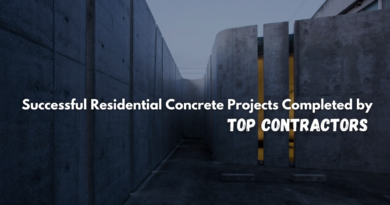Harmony in Concrete – A Deep Dive into Sustainable Urban Design
The relentless march of urbanization across the globe has reached exceptional levels, with cities expanding and evolving at a speedy tempo.
Amid this urban surge, the need for a sustainable city layout has emerged as an essential area of attention.
This article aims to resolve the complicated layers of sustainable city design, exploring its significance in creating a harmonious balance between the concrete jungle and the natural global.
The Imperative of Sustainable Urban Design
As our cities swell with inhabitants, the pressure on the surroundings becomes more palpable. Sustainable city layout responds to this project at Justmarkets, imparting a nuanced method to metropolis-making plans to harmonize city development with ecological protection.
Foundations of Sustainable Urban Design
Holistic Land Management
The intricately woven fabric of strategic land allocation lies at the nucleus of sustainable city layout.
This multifaceted method extends beyond mere physical planning; it’s a dynamic strategy that optimizes spatial performance, cautiously integrates green spaces, and rigorously curtails the environmental effect of construction projects.
The overarching objective is to domesticate cities that transcend conventional urban sprawl, functioning as interconnected ecosystems wherein each element plays a crucial role in fostering sustainability.
Optimizing Spatial Efficiency
Intelligent land use involves meticulously examining spatial sources, ensuring that every inch serves a reason.
By optimizing spatial performance, a sustainable urban layout maximizes the application of to-be-had land without succumbing to the pitfalls of haphazard enlargement.
This calculated technique no longer addresses the immediate needs of the populace but also lays the foundation for destiny growth and flexibility.
The Role of Green Spaces
Symbiosis of Nature and Concrete
A defining function of sustainable urban design lies inside the intentional integration of green areas, remodeling the harsh city landscape into havens of tranquility.
Parks and gardens serve as vital components, presenting now not just a visible respite from the concrete jungle but also supplying tangible advantages to the proper well-being of town dwellers.
Beyond their aesthetic enchantment, these inexperienced sanctuaries contribute to superior-high-quality air and a growing wallet of fresh air amidst the bustling urban setting.
Well-Being Through Nature
The infusion of city parks and gardens isn’t always simply a classy embellishment; it is a planned strategy to decorate the general well-being of residents.
Scientific research underscores the positive impact of green areas on intellectual health, strain discount, and physical health.
As fundamental elements of sustainable urban layout, these natural retreats contribute to a better satisfaction of life, fostering a more fit and harmonious city lifestyle.
Sustainable Transportation Solutions
Public Transport Networks
Breaking free from the shackles of personal vehicular delivery, sustainable city design advocates for developing green public transportation networks. This now alleviates site visitors’ congestion and notably curtails carbon emissions.
Bike-Friendly Infrastructure
Embracing green modes of transportation and sustainable layout encourages the introduction of motorbike-pleasant infrastructure.
This no longer most effectively promotes a fitter way of life; however, it additionally contributes to a discounted environmental impact related to commuting.
Waste Management in Urban Design
Waste Reduction Strategies
A quintessential aspect of sustainable city layout is the implementation of effective waste reduction strategies.
This involves selling recycling, composting, and using sustainable materials in production to minimize waste generation.
Circular Economy Principles
Going past mere waste discount, a sustainable city layout aligns with the principles of a round economy.
This involves a focus on reusing and recycling materials, thereby lessening the pressure on herbal assets and enhancing the city’s city’s overall resilience.
Community Engagement and Well-Being
Sustainable Embrace of Inclusivity
Within the area of sustainable urban layout, inclusivity takes center stage. A robust dedication to inclusivity ensures that the blessings of urban improvement are on hand to all network participants.
This encompasses no longer the best bodily accessibility but also the advent of surroundings that foster a profound feeling of belonging and social well-being.
Sustainable urban designers apprehend the significance of breaking down barriers, ensuring that public spaces and facilities cater to the diverse needs of the entire network.
Cultural Tapestry Woven into Urban Planning
A different feature of the sustainable layout is its dedication to weaving the colorful threads of the local way of life and background into the cloth of urban planning.
This approach transcends the mere maintenance of historical factors; it transforms the urban panorama into a living, breathing birthday celebration of diversity.
By embracing and integrating cultural nuances, a sustainable urban layout no longer best preserves the specific identification of a network but also enriches the city’s enjoyment.
The cityscape becomes a canvas upon which its inhabitants’ memories, traditions, and customs are vividly painted.
Conclusion
In the dynamic and ever-evolving global of urban development, sustainable city layout stands as a beacon of desire.
By strategically using land, integrating green spaces, promoting strength performance, encouraging sustainable transportation, dealing with waste successfully, and fostering network engagement, towns can remodel into harmonious residing environments.
The name for sustainable practices isn’t always simply an environmental challenge; however, it is a fundamental necessity for our planet’s well-being and future generations’ prosperity.
As we continue constructing the towns of the following day, let us ensure they stand as testaments to the delicate harmony between city development and the natural international.
Also Read:




